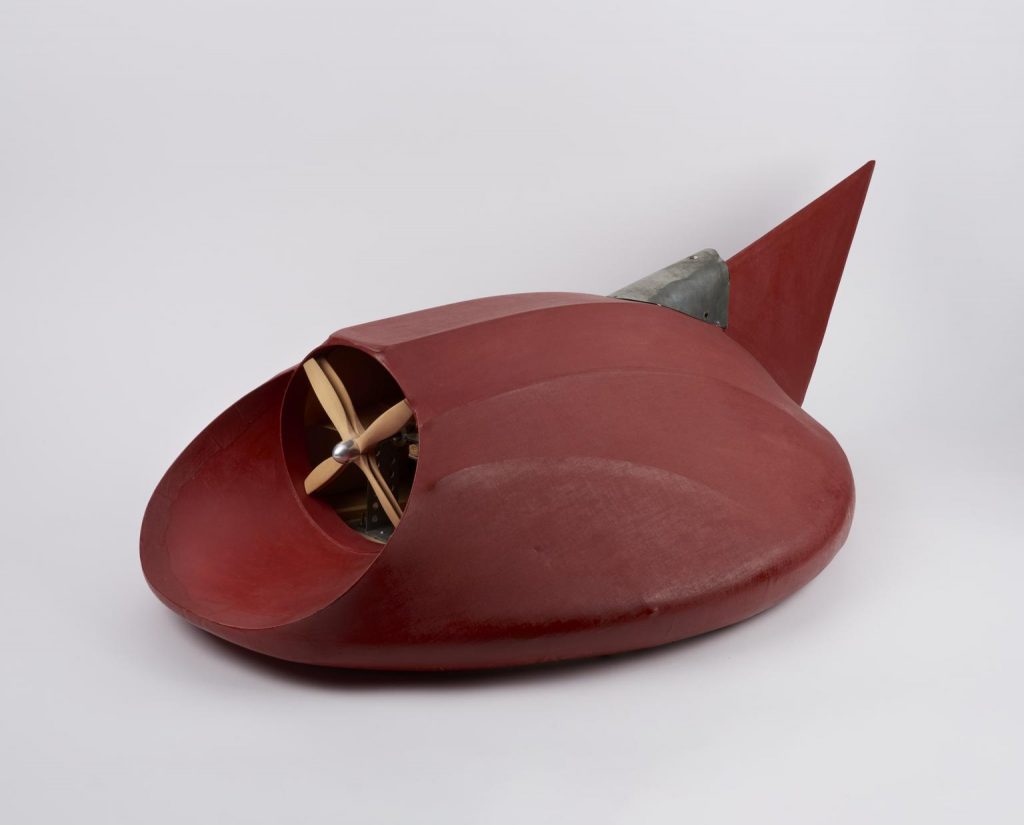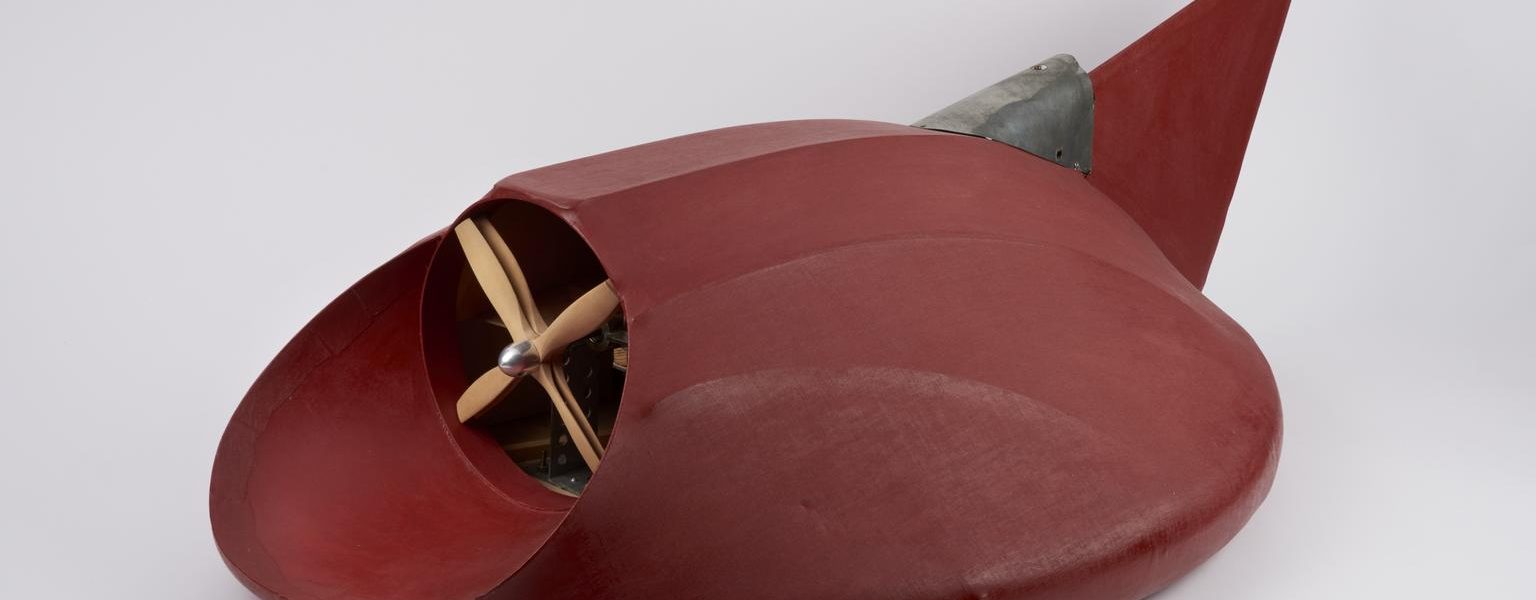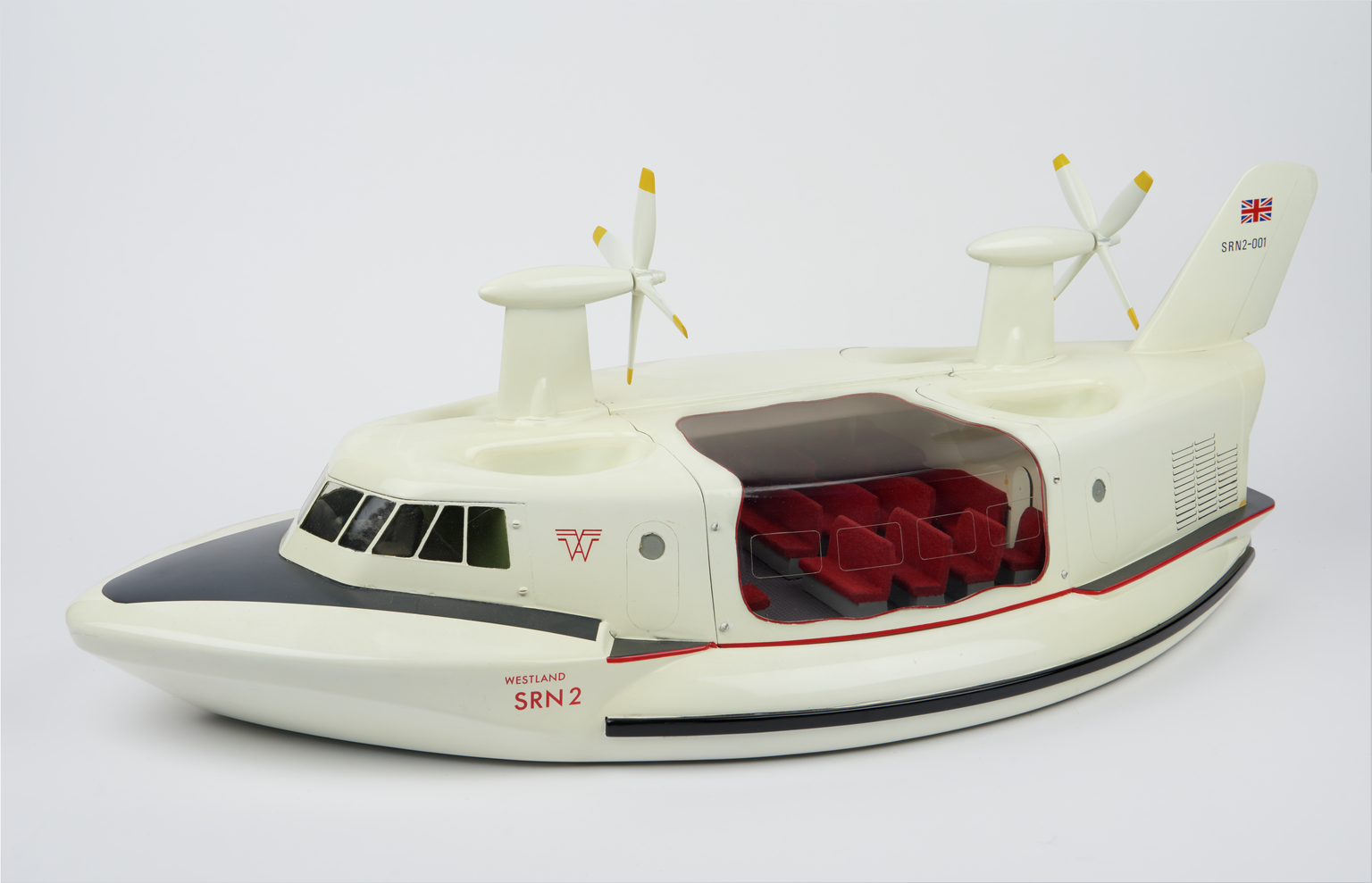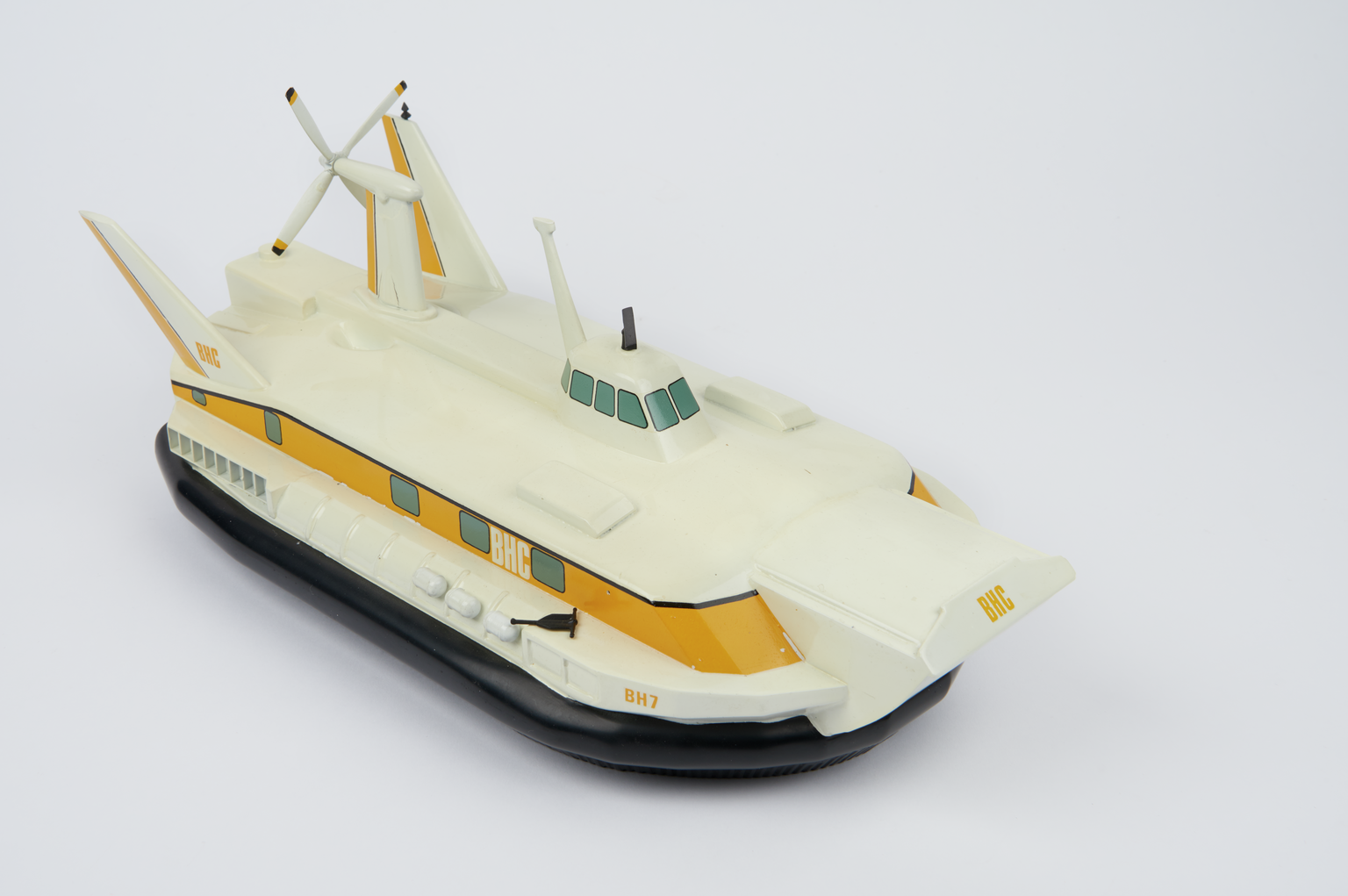It’s a busy time for transport anniversaries. I’ve already mentioned the centenary of Bleriot’s flight across the Channel and the ninetieth anniversary of Alcock & Brown’s crossing of the Atlantic.
Today, I’ll talk about one more pioneering flight across the water. The craft was called ‘SR-N1’ (Saunders-Roe Nautical 1), and it too flew across the Channel, fifty years to the day since Bleriot first flew over. But this flight, in 1959, was very close to the water.
You guessed it: it was the first hovercraft crossing. Christopher Cockerell, the hovercraft’s inventor, accompanied by a pilot and navigator, made the crossing on 25 July 1959; the craft had previously been demonstrated in the Solent on 11 July. SR-N1 is in the Science Museum’s collection and is stored at our Wroughton site. Here it is at Calais, before the maiden crossing.
But Cockerell’s own hovercraft had flown some four years previously. Having acquired a small shipyard on the Norfolk Broads, Cockerell experimented with the improvised kit before completing an experimental prototype model (using model aircraft-type construction of nylon or silk over balsa wood with a glow-plug model aero engine) which he tested by tethering it to a rowing boat at his yard and flying it around. This prototype is also in the museum’s collection and is on show in the Flight gallery.

Hovercrafts have never really fulfilled the promise held out for them in the ’50s, apart from some ferry routes and niche uses such as military assault vehicles. Owing largely to their aircraft ancestry they have high manufacture, maintenance and fuel costs, the latter of particular concern now as we look to cut down on fuel use in transportation.
Still, it did lead to the hover mower. It’s said that lawnmower technician Karl Dahlman saw a picture of SR-N1 in flight and had the idea of applying its principles to lawncare. You can see a 1970s hover mower in the museum’s ‘Making the Modern World‘ gallery.


